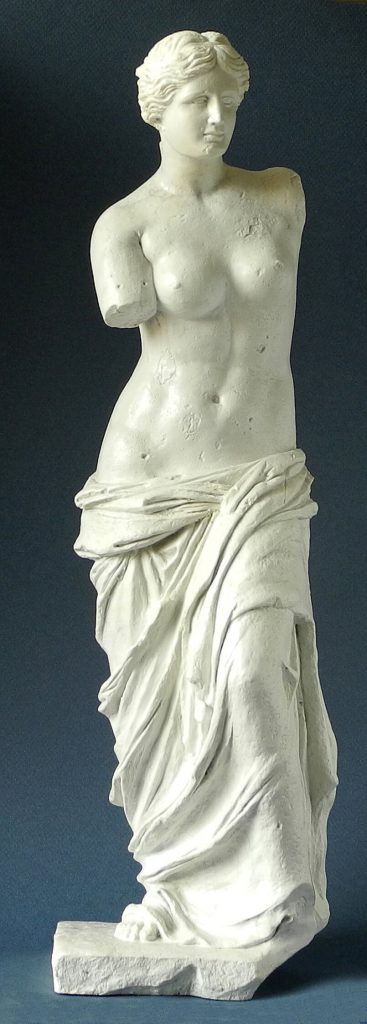The Venus di Milo
(± 100 B.C.)
This famous sculpture of Aphrodite is viewed as a symbol of eternal beauty. It is known as the Venus di Milo or the Aphrodite of Milos because of the Greek island it was found on in 1820. Aprhodite, later referred to as Venus by the Romans, was the goddess of love and beauty who was born from the silver foam (aphros) of the sea. The Venus of Milo’s style revealss both Hellenistic and classicist characteristics. Her upper body is much more classicistic than her lower half. The sculpture was made from seven blocks of marble. The goddess has the characteristic contrapposto posture: her full weight on one leg which lends the body an alluring curve. It is hard for us to imagine what the sculpture may have looked like originally. It was expressive, polychromed and adorned with jewellery and gemstones. Presumably Aphrodite held the apple she reveicved from Paris of Troy in her left hand.

GRE08
- h. 45 cm.